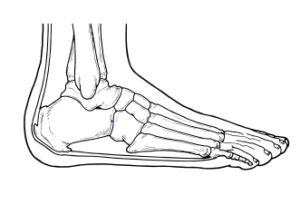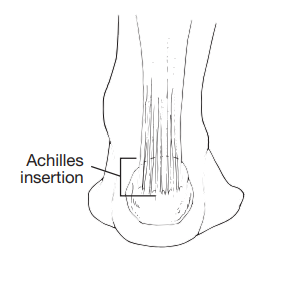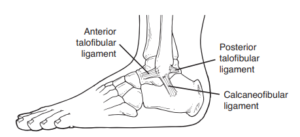It is that time of year that everyone is wrapping up vacations and getting back into the new school year, fall sports, ISU football games and tailgating while continuing with regular fitness. Activity levels tend to increase in the spring and summer with the weather getting warmer and are full steam ahead through fall.
Foot and ankle pain is often put on the back burner to seek out medical care until it gets so painful you cannot take it anymore! Many times, if you get evaluated when you start having the issues, it may decrease or keep you from having downtime from your exercise. Getting seen by a podiatrist can be helpful to get an accurate diagnosis and treatment plan to keep you active. The foot and ankle are complex with bone, muscles, ligamentous and tendinous insertions as well as nerves that can get entrapped. A lot of the structures that insert onto your foot start up in your leg and sometimes the issue is at a higher level. Why wait to get the help you need to keep you active?
There are two main categories of injuries that can occur: Overuse injuries and traumatic injuries. Overuse injuries tend to have a gradual presentation and can slowly get worse. This can be due to improper shoe gear, increasing activity too quickly or some terrain can aggravate certain conditions. These are the issues that tend to get ignored because they tend to be nagging and people keep trying to convince themselves that it will get better. One of the common conditions of the foot & ankle is heel pain. Heel pain that occurs in the bottom of the heel and arch is frequently due to plantar fasciitis. This is inflammation of a ligament that attaches to the heel bone. Many times, a heel spur develops in this area over time due to the inflammatory process. The heel spur is not what causes the pain though, it is the inflammatory process at the attachment. Calf stretches are an important component to treating this condition. Ice massage, proper shoe gear and often time orthotics are also needed. Even with doing all these treatments, sometimes it just doesn’t get better. It becomes more difficult to navigate getting the pain to improve and continuing the same level of activity. There are times when steroid, laser treatments or amnion injections are helpful for heel pain.
The band on the bottom of the foot pictured represents the plantar fascial band and on the Achilles
Achilles tendonitis is another condition that presents as heel pain. This is pain that occurs at the attachment of the Achilles tendon on the heel or in the tendon itself. Treatment can be similar to plantar fasciitis with calf stretching and icing. The Achilles tendon has an area of decrease blood flow that can be prone to rupture if it goes untreated or develops thickening of the tendon itself. This is frequently thought of to be just swelling but can be small tears that are healing in an unorganized fashion creating thickening of the tendon and can weaken the area. Activity modification, medication, orthotics and at times immobilization can be needed to reduce the pain and inflammation and prevent the area to getting progressively worse. Other tendonitis is common in the foot and ankle as well.
The Achilles tendon demonstrates the thickening of the tendon and is the area that can be at risk for rupture. The picture on the right shows the insertion of the Achilles on the heel bone.
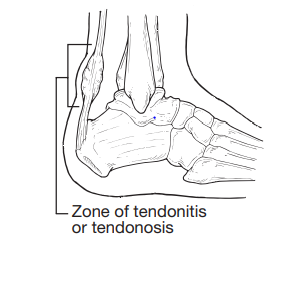
There are also traumatic injuries that occur in a moment. Some injuries are mild and recover quickly and others need immediate care. There is a common misconception that if you can walk on it, it isn’t broken or not a severe injury. If you have difficulties walking on it, it is an injury that should be evaluated. Radiographs are often needed to evaluate for a fracture. There are other soft tissue injuries that do not show up on xray but can cause a significant problems or pain. A common injury is rolling your ankle. How many times have you been walking along and out of nowhere you step on something you didn’t see and the next thing you know you are on the ground! This type of injury can cause ligament tears, tendon tears, aggravate nerves or cause broken bones in your foot or ankle. The outside of the ankle and foot tend to be most commonly injured when you roll your ankle. If you get swelling, bruising or have difficulties putting weight on it, getting evaluated by a specialist is an important step to your recovery. If you had an injury that is slow to heal, there may be more going on than what you realize. Get it checked out by a podiatrist today!
All pictures used with permission from the American College of Foot & Ankle Surgeons
The below pictures show the different areas where the 5th metatarsal can break on the left. The picture on the right shows the ligaments on the outside of the ankle that frequently get injured with an ankle sprain.
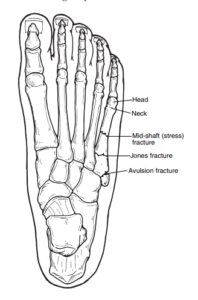
All pictures used with permission from the American College of Foot & Ankle Surgeons

